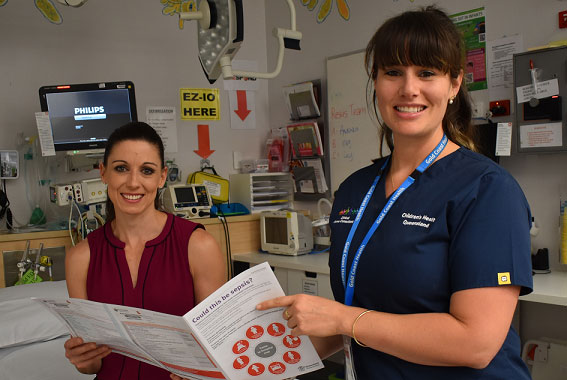'Recognising the critically unwell child' was a recurring theme at our recent Sepsis Breakthrough Collaborative learning session. So, today on the blog, Australia's first Paediatric Sepsis Clinical Nurse Consultant, Amanda Harley, walks us through her experience with paediatric sepsis and critically unwell children.
'The recognition of sepsis can be challenging which is why we are working hard to raise awareness of sepsis. Some health professionals think paediatric sepsis is rare, but collectively across the state and Australia – it’s not rare,' Amanda says.
She added that since April 2019, over 1,000 children at Queensland Children’s Hospital have been screened on the sepsis clinical pathway. Of those, over 100 were treated as sepsis—many of which required support in the Paediatric Intensive Care Unit due to sepsis.
'By its simplest definition, sepsis is infection plus organ dysfunction. Most children will have mild infections during childhood – most of these will not progress to sepsis. Sepsis develops when the child’s response to the infection leads to the shutdown of organs. That’s the real tipping point,' Amanda said.
'When a child has signs of infection and concerning signs, such as laboured breathing, lethargy, altered level of consciousness, poorly perfused limbs to name a few, that’s when I’d be utilising the paediatric sepsis clinical pathway and escalating them for urgent SMO [senior medical officer] review.'
Amanda says the benefit of clinical and cognitive aids like the paediatric sepsis clinical pathway help bring a complex paediatric case into focus. 'The screening tool will assist you to connect the dots ensuring escalation to a senior medical review occurs early. It doesn’t replace your clinical judgement, or experience, but, rather, guides you using evidence-based practice. The treatment tool is standardising treatment, again based on the evidence, to ensure that children everywhere are receiving the right - and timely - treatment in response to their condition,' she said.
Amanda said there has been a heightened sense of awareness of sepsis among clinicians after the introduction of the paediatric sepsis clinical pathway at a number of sites across Queensland. 'Clinicians are engaged in learning and passionate about recognising the signs and symptoms of sepsis early. They are acquiring the skills to manage the illness to ensure children have the best chance of survival. Clinicians are asking the question: "Could this be sepsis?" I’ve heard them say it, which is fantastic. But we still have work to do.'
Here are Amanda’s top 4 signs your paediatric patient may have sepsis:
- Rapid heart rate and/or breathing
- Lethargy, floppiness, drowsiness
- Altered level of consciousness
- Parental/carer concern—the child is not normally like this when unwell.
'There no substitute for that gut feeling that something isn’t right. Listen to it and escalate your concerns to a senior medical officer right away.'

Sepsis clinician-researcher Amanda Harley, with the mother of a sepsis patient. Image courtesy Gold Coast Health.
Visit the sepsis webpage for more information.